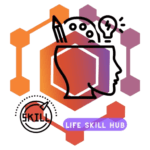Table of Contents
ToggleWhat is a Website?
A website is a collection of related web pages that are typically identified by a common domain name and published on at least one web server. Websites can serve various purposes, including informational, educational, commercial, or entertainment.
What is www?
“www” stands for World Wide Web, a system of interlinked hypertext documents accessed via the internet. It’s a commonly used prefix in domain names, although many modern websites omit it.
What are the Different Types of Websites?
- E-commerce Websites: Designed for online transactions and selling products or services.
- Blogs: Platforms for individuals or organizations to share information, opinions, and updates.
- Portfolio Websites: Showcase the work and achievements of individuals, such as artists, photographers, or designers.
- Corporate Websites: Represent companies and provide information about products, services, and corporate identity.
- Educational Websites: Serve as platforms for learning, offering courses, resources, and educational content.
Web Page vs Website:
- Web Page: A single document on the web containing text, images, multimedia, or other elements.
- Website: A collection of interconnected web pages under a common domain.
Difference between Blog vs Website:
- Blog: Primarily focused on regularly updated content, often written in a conversational style.
- Website: A broader term that encompasses various types of content and can include static pages, portfolios, and more.
Components of the Website:
- Header: Top section containing the website’s logo, navigation menu, and possibly contact information.
- Footer: Bottom section often including copyright information, contact details, and additional navigation.
- Navigation Menu: Links to various pages within the website.
- Content Area: Where the main information is presented, including text, images, and multimedia.
Purpose of Creating Websites:
- Information Dissemination: Share information about products, services, or topics of interest.
- Brand Presence: Establish an online presence and build brand identity.
- Communication: Facilitate communication with customers, clients, or the target audience.
- E-commerce: Enable online transactions and sales.
How to Build a Web Page?
- Plan: Define the purpose, audience, and content structure.
- Design: Create wireframes or prototypes for the layout.
- Coding: Use HTML, CSS, and possibly JavaScript for the actual development.
- Testing: Ensure the web page is functional across different browsers and devices.
- Launch: Publish the web page for public access.
Web Design vs Web Development:
- Web Design: Focuses on the visual aspects, layout, and user experience.
- Web Development: Involves coding, server-side scripting, and database management.
What Makes a Website User-Friendly?
- Intuitive Navigation: Easy-to-use menus and clear pathways for users to find information.
- Responsive Design: Ensures the website functions well on various devices and screen sizes.
- Fast Loading Times: Optimized images and efficient coding for quick page loading.
- Clear Call-to-Action (CTA): Guides users on what steps to take next.
- Accessible Content: Ensures the website is usable by people with disabilities.
Dynamic vs Static Website:
- Dynamic Website: Content changes dynamically based on user interactions or data from a database.
- Static Website: Content remains the same for all users and is fixed until manually updated.
What are Responsive Websites?
Responsive websites adjust their layout and design based on the device and screen size used by the visitor. This ensures a consistent and optimal user experience across desktops, tablets, and smartphones.
Build Your Portfolio Website:
- Choose a Domain: Select a memorable and relevant domain name.
- Select a Platform: Consider using website builders like WordPress, Wix, or Squarespace.
- Design Your Layout: Create a visually appealing and user-friendly layout.
- Showcase Your Work: Display your best projects or achievements.
- Contact Information: Include a contact form or clear contact details.
- Optimize for SEO: Use relevant keywords and meta tags for better visibility.
